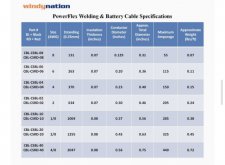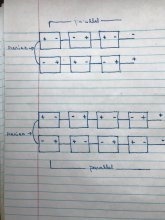I looked at the price of ~ 280 ft. of both #8 and #6 cable and it’s about the same price as another panel.8 AWG, supporting 35A @ 82 volts V(mp) on a 70 foot run loses around 4.6% in wiring losses (AKA "Voltage Drop", the SCC receives only 78.1 Volts of difference.) 6 AWG would lose about 2.9%, at rated panel output. The number of strands creates small differences in these figures. I don't know if you need type UF, or whether everyday building wire will be OK. 70 feet seems like a kinda long run.
I also checked the availability of these same panels and they are available still.
Would you prefer seeing 1 extra 400 watt panel in this equation?








